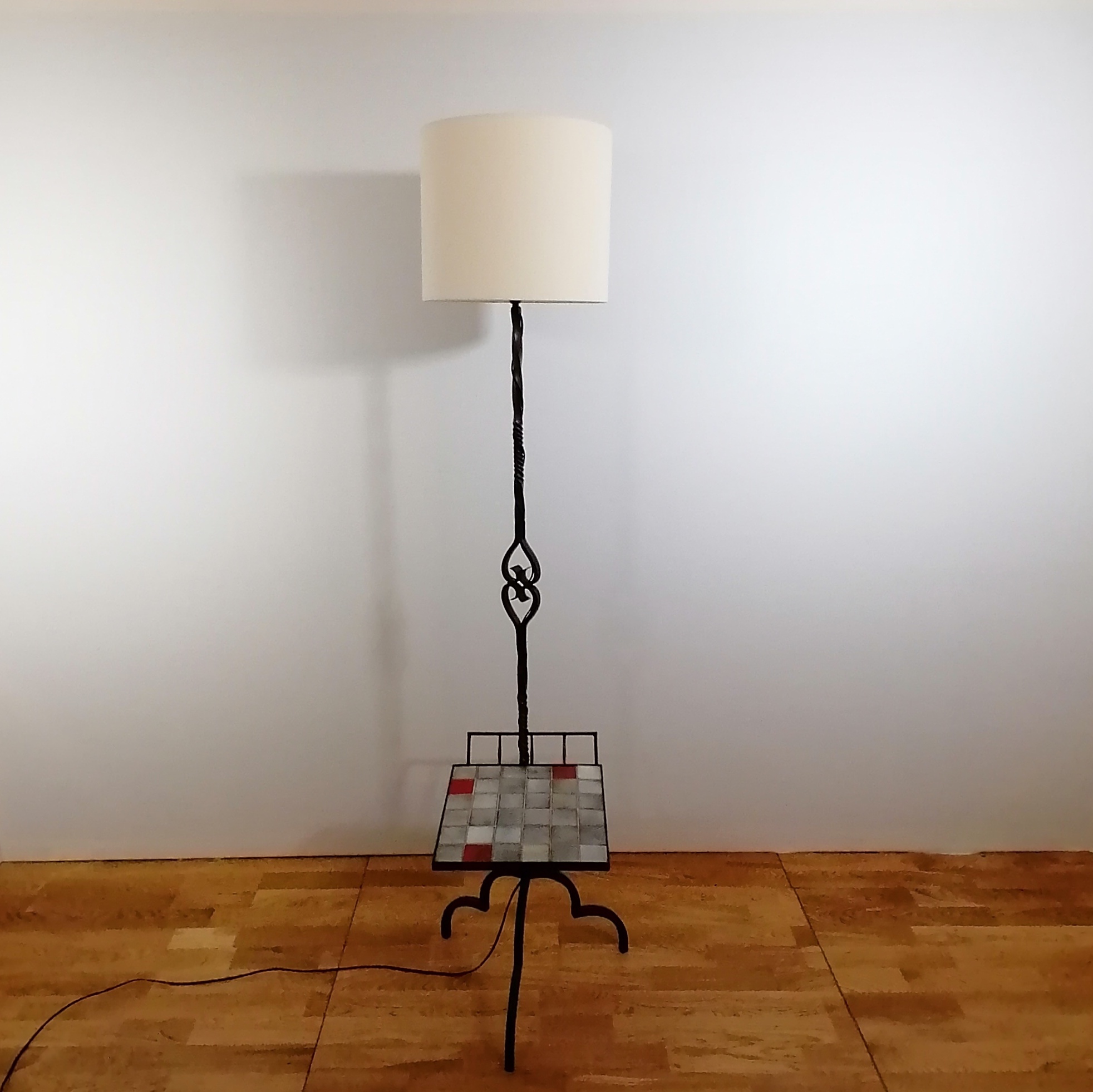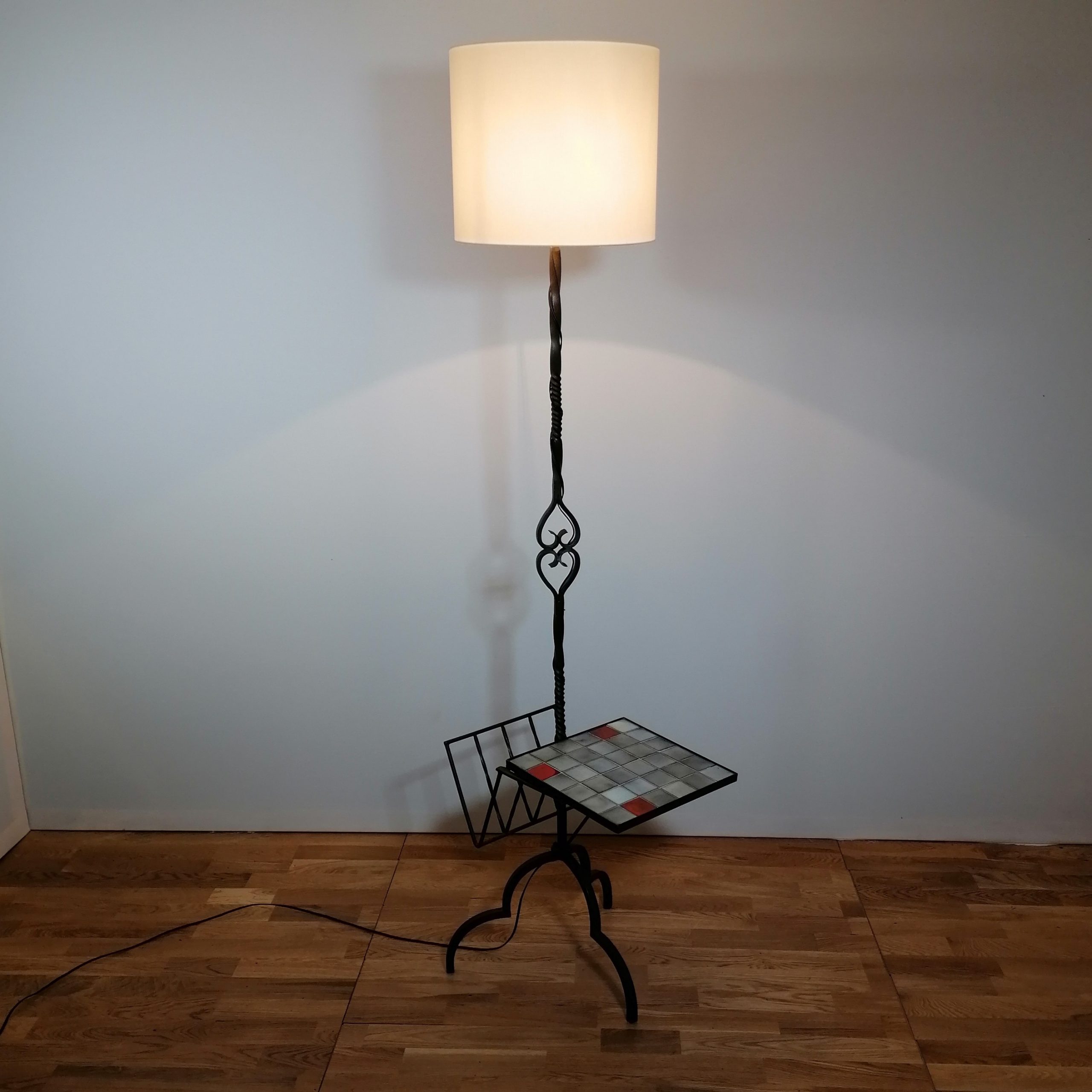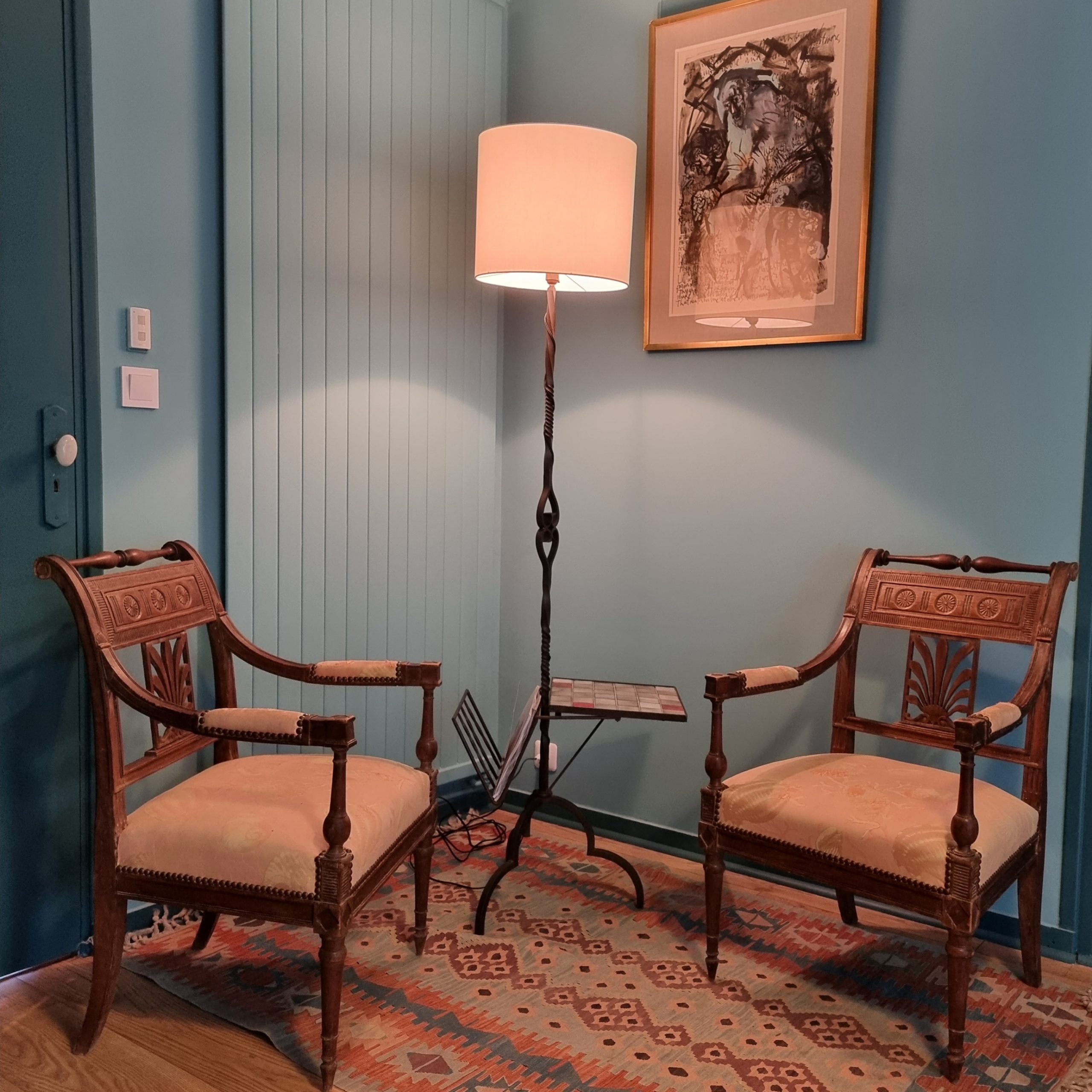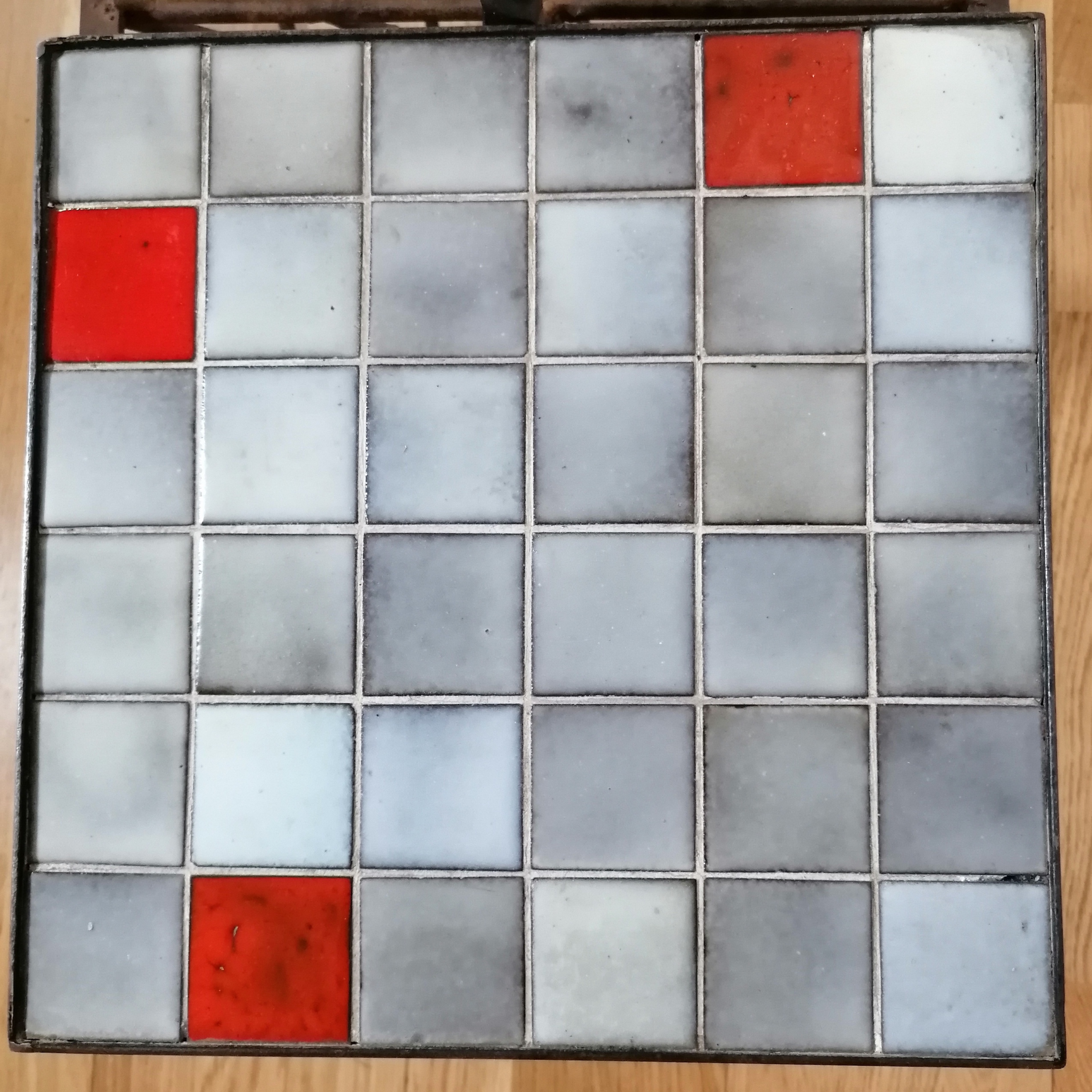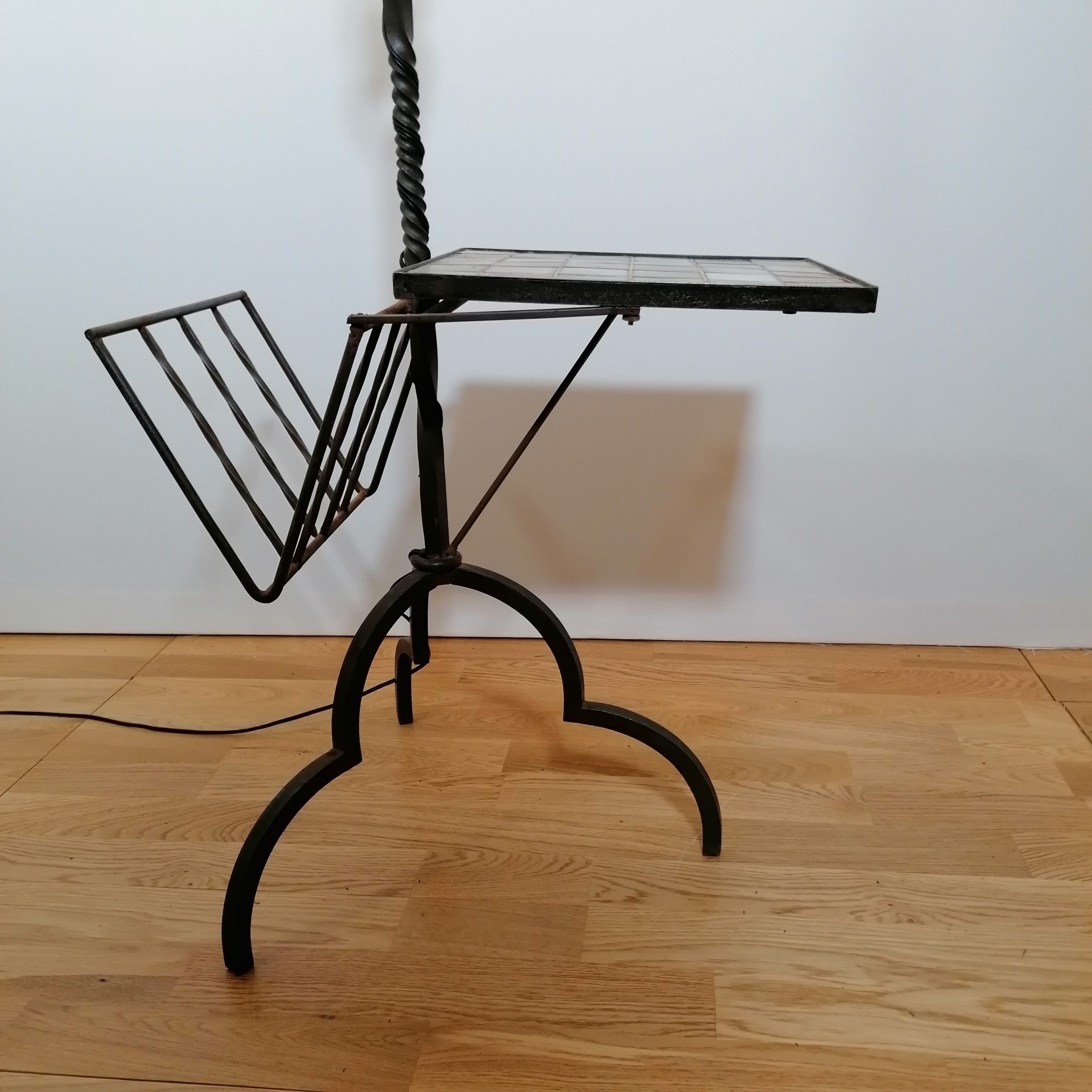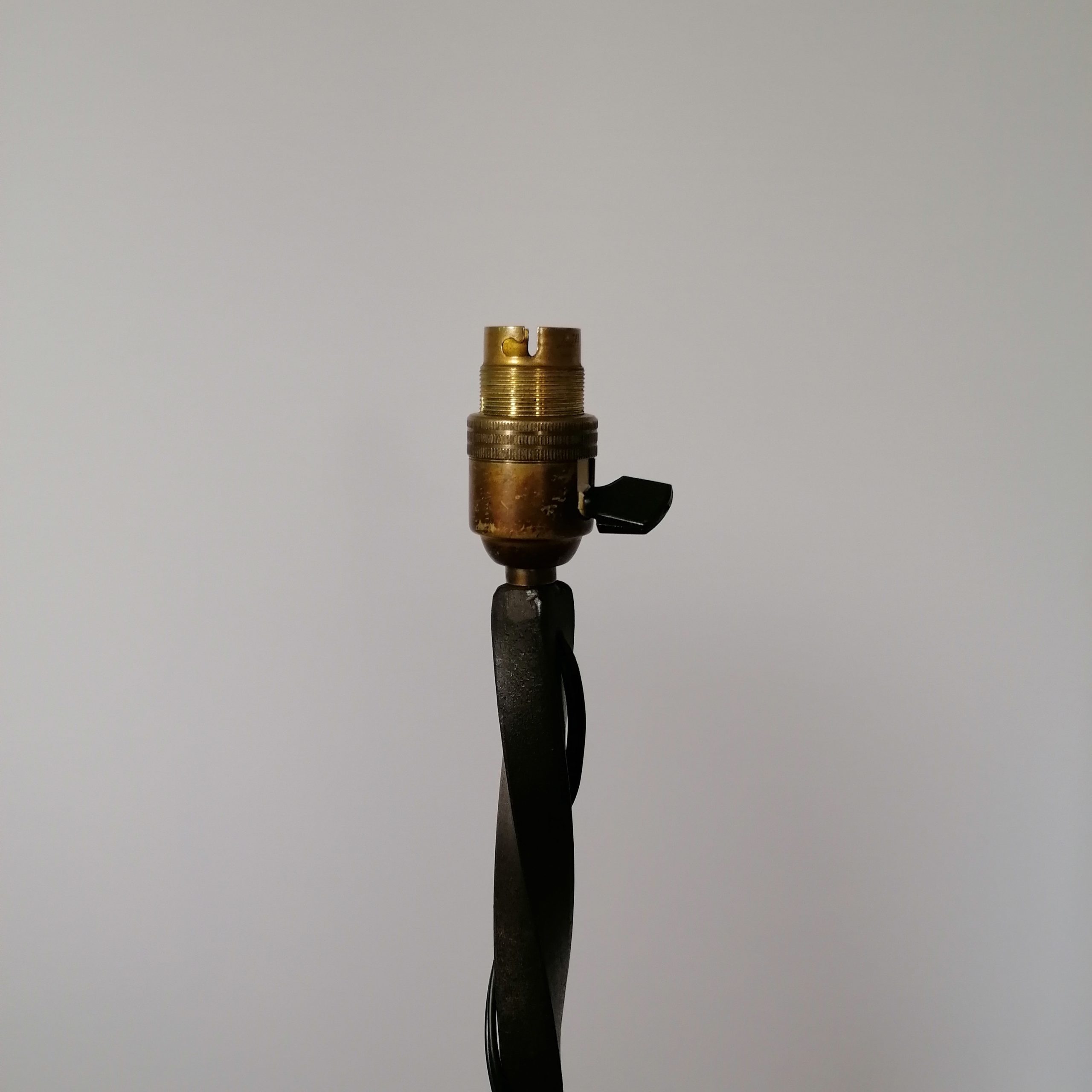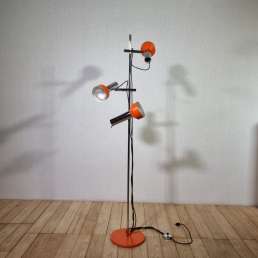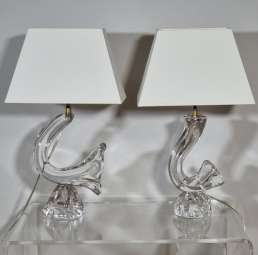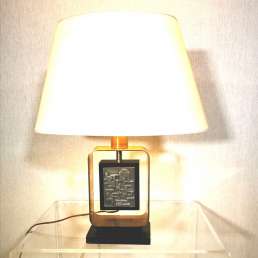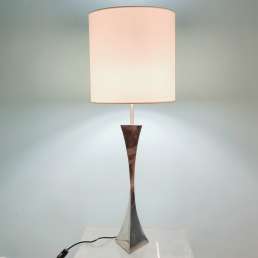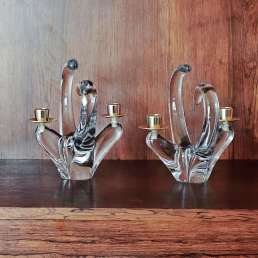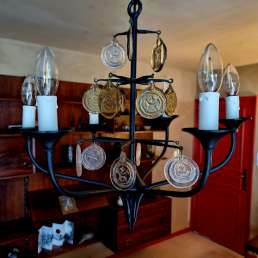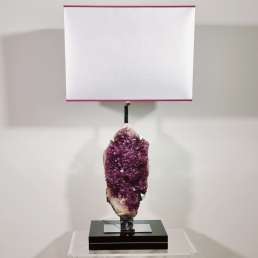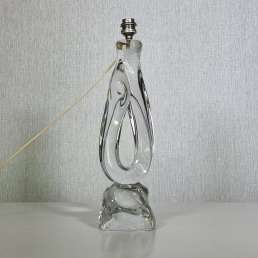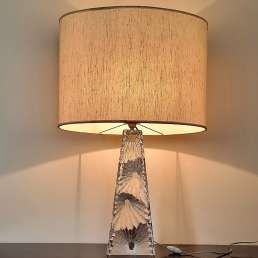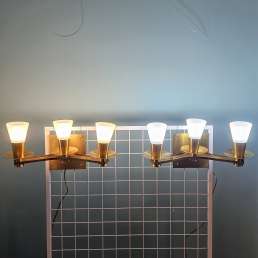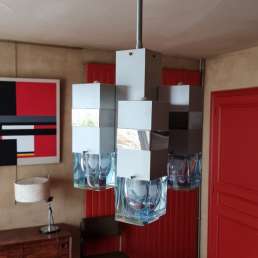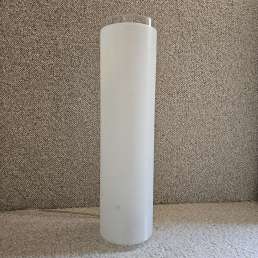Mado Jolain et René Legrand floor lamp circa 1960
Description
What I like
First of all, I like the extremely practical side of this versatile piece of furniture: you can read, put down a glass and store your reading, all in one place!
Above all, I like the very drawn side of the foot of the floor lamp: it is necessary to note the great skill of the ironworker on the design of René Legrand, which multiplies the play of different twists, adorned the shaft of the knot made up of two facing hearts, and finally lightens the whole by the play of the three aerial feet in double arc.
Finally, I like the touch of color provided by Mado Jolain’s work: of course, his grays and oranges are not united but subtly nuanced: we come out of mass production, to find ourselves facing a handcrafted floor lamp, alliance of two talents that come together to bring cheerfulness and comfort to your interiors.
Technical
Mado Jolain- ceramist- and René Legrand- designer, for I/D company
Hand-wrought iron floor lamp, the shaft presents a game of varied twists and offers at half the height a knot formed by two heart motifs facing each other; it is accosted by a square shelf with a thunderstorm and shaded gray ceramic tile tablet, and a magazine rack; the plinth has three double arched feet.
Around 1960.
We recreated a cylindrical lampshade in off-white cotton (Diameter: 35 cm – Height: 30 cm).
Slightly loose tablet.
Dimensions and weight
Height: 145 cm – Width: 53 cm – Depth: 31.5 cm
Height with lampshade: 175 cm
Weight: 10 kg
Mix & Match
This multifunction floor lamp is certainly typical of the 1960s. I can see it quite clearly enthroned next to the coffee table by Juliette Belarti alias Julien de Covemaeker with abstract decor and also ceramic from the same period. But why not use it to liven up the virginal color of Gae Aulenti’s Orsay salon: its very original shape, playing with the rigor of the Orsay salon?
The color of its ceramic could be a counterpoint to the pair of red Space Age armchairs, or it could brighten up the Danish oak living room from the 50s / 60s by Borge Jensen and Sonner.
But it can also be placed next to a Louis XVI or Empire chest of drawers, especially in mahogany or uniform veneer: here too, the original line will flourish with pleasure. The quality of its manufacture will enhance that of the furniture of bygone times.
In stock
Description
To know more
The creators
Mado Jolain was born in Paris in 1921. Under the Occupation, she joined the School of Decorative Arts in Paris and the drawing and sculpture workshops of the Grande Chaumière. There she met René Legrand, who turned more towards painting. Sensitized by the enthusiasm for ceramics that began before the war, Mado Jolain carried out her first tests as a potter in the oven of a utility ceramics workshop on rue d’Alesia.
In 1946, Mado Jolain and René Legrand got married and moved to Montrouge where René set up his painting studio. The ceramic workshop is not far away, in the 14th arrondissement. René Legrand turns their first plays. Folk art, very popular in the post-war decorative arts, was a great source of inspiration for them. They visit the Dijon Museum and the Museum of Popular Art and Traditions where they appreciate the shapes of utilitarian pottery.
In 1948, creations from the Mado Jolain workshop were exhibited for the first time at the Salon des Ateliers d’Art Décoratif and at the Object 1948, an exhibition that dates back to after the war, organized at the Galerie Denise Breteau, rue Bonaparte. ,Paris.
Among the turners who will collaborate in this place with Mado Jolain, Michel Lanos is the one who remained the longest and who participated in the creation of the series of planters and in a multitude of spice jars that brought the workshop to life.
In 1964, Mado Jolain made a trip to Japan where she visited Hamada’s studio, and to England in the footsteps of Bernard Leach. Despite these visits to the post-war masters of ceramics, Mado Jolain will remain inspired mainly by the research of great architects such as Le Corbusier, Jean Prouvé, Alvar Aalto.
In 1963, she exhibited her garden ceramics at the Galerie du Siècle, a gallery in Saint-Germain des Prés. With garden ceramics, Mado Jolain is moving towards more monumental creations. In 1963, she produced a claustra wall for the Auteuil greenhouses on a commission from Daniel Collin, landscape architect at the Direction des jardins de la ville de Paris.
In 1966 his exhibition at the Folklore gallery in Lyon will be the last of his activity as a ceramist, which ends in 1970.
René Legrand, born in 1923 and died in La Rochelle in 1996 is a French painter, ceramist and interior designer.
Painter of the New School of Paris, holding lyrical abstraction, after the Second World War, he abandoned painting in 1956 for the creation and distribution of objects in natural materials and wooden furniture, under the teaches “Four Seasons” (1965-1985).
René Legrand married ceramist Mado Jolain in 19465. While carrying out his artistic work as a painter, René Legrand participated in the creations of the ceramic workshop. Among the workshop’s productions, several models of coffee tables with enamelled ceramic tile tops on brushed metal legs designed by him.
In 1956, René Legrand founded with Mado Jolain-Legrand, I / D, a publishing company to diversify their productions beyond ceramics. The same year, René Legrand decided to let go of his brushes, not to stop creating, but to create differently. In addition to coffee tables, he designs magazine racks, floor lamps, wall lights with metal structures. He develops collections of covered cardboard objects. He adapts industrial objects (laboratory glassware) as well as traditional artisanal productions (turned wood, basketry, cooperage, etc.) to the spirit of the 50s and 60s After starting at the Ceramic Fair, alongside the ceramists Chambost, Ruelland, Jouve, Capron, Deblander… René and Mado Legrand exhibit their creations at the Salon des Métiers d’Art, Porte de Versailles.
In 1965, they created their own “Quatre Saisons” sign to present their creations in a coherent whole, which expresses their convictions in terms of interior furnishings, contrary to the state of mind of the decorators of the time. Well in the spirit of the 1970s which revolutionized clothing, music, cinema or novels, the Quatre Saisons brand (three stores in Paris, three in the provinces) offers a new way of casual furnishings with shelves and modular furniture in raw wood to paint or varnish, which is put together and reassembled over the evolution of families, and diverted professional equipment such as trestle tables, screw stools, industrial storage shelves, etc.
In 1985, René Legrand sells Quatre Saisons and prepares a round-the-world sailing trip that he does on the boat he built from 1987 to 1989. Attentive all his life to the evolution of art, he never will never come back to painting.
He died in La Rochelle in 1996.
The editor
This floor lamp may be created under the name of the I/D company, Jolain et Lergand created in 1956, a publishing company, before Jolain and Legrand founded their own brand Les Quatre Saisons in 1965. In any case, the ironwork shows a handcrafted manufacture, undoubtedly to a relatively small number.
A beautiful, authentic object at the right price
This floor lamp has been carefully selected for its aesthetic qualities, its originality and its fair price. Our choice favors above all the freshness of this creation, pledge of valuing your new acquisition in your interior and of an ability to interact with your furniture, to match and mix to create a unique decoration.
Buying a vintage floor lamp is surely a reasonable investment, so great is the appetite for the 1950s to the 1970s.
Finally, buying a vintage floorlamp preserves the resources of planet earth.
Additional information
| Dimensions | 31,5 × 53 × 145 cm |
|---|---|
| Créateur | |
| Epoque | |
| Matières |


